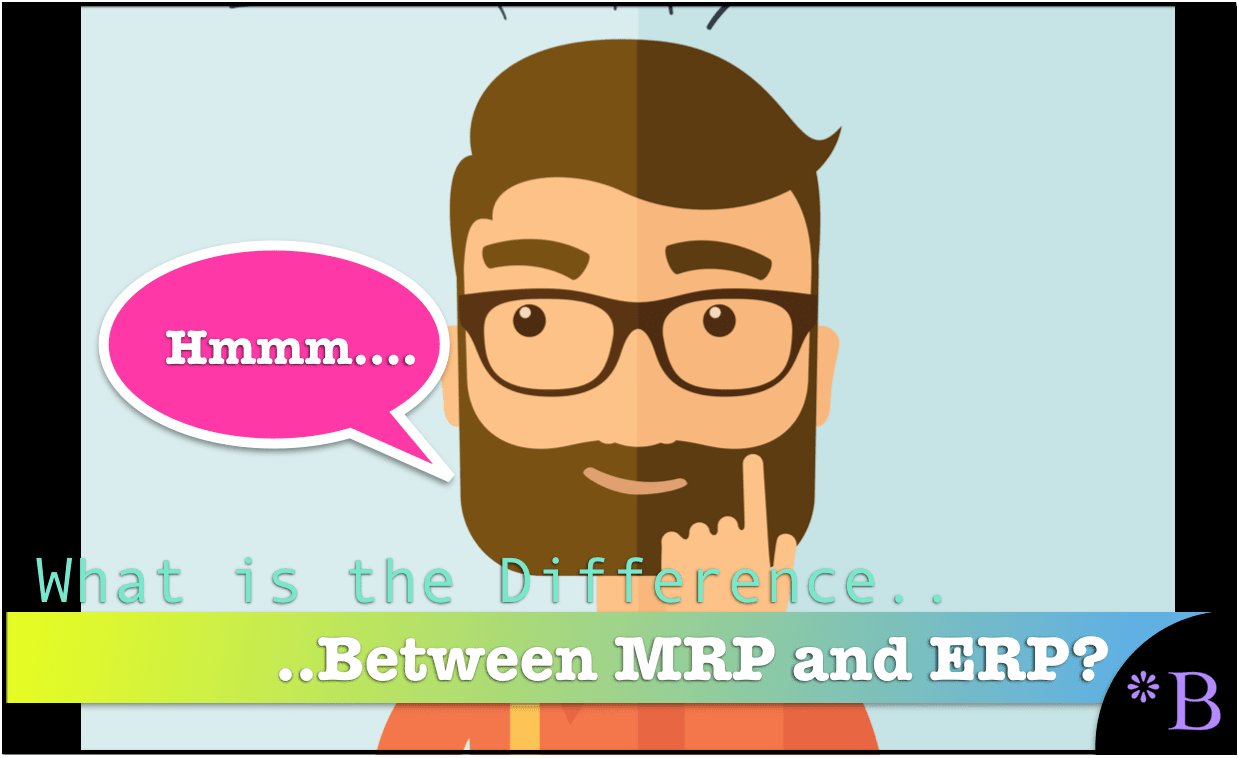What is the Difference Between MRP and ERP Systems?
Executive Summary
- MRP is distinct from ERP, which is the most common system from where MRP run.
- We cover the relationship between MRP and ERP.

Introduction
When MRP systems, which stands for Material Requirements Planning, were first implemented, they were standalone systems. But in the 1980s, most of the MRP vendors were purchased by and incorporated into ERP systems. This is typically presented as a positive development due to the benefits of integration. However, a review of MRP-based ERP implementations calls this conclusion into question.
In this article, you will learn the real story of how MRP works within ERP.
Our References for This Article
If you want to see our references for this article and related Brightwork articles, visit this link.
What is the Difference Between MRP and ERP Systems?
MRP and ERP are two entirely different things. MRP is a procedure for supply and production planning, either run within a system. ERP is a system that runs, among other things, MRP.
- While MRP systems can be standalone, it is much more common for the MRP procedure to run within ERP systems.
- The idea is that this allows one to benefit from an integrated system. However, what ERP vendors never admit is that their MRP capability is far lower than when MRP is run external to the ERP system.
The placement of MRP systems within ERP has created the expectation that MRP procedures be generic. Our research conclusion is that the MRP procedure cannot be generic in its design. However, this generic MRP design is what is presented as desirable to companies, and the topic of customization for the MRP system is rarely discussed. This is why we offer Real-Time MRP, which is configured for the specific company requirements. However, MRP is broadly accepted as generic, so we offer a very niche offering.
ERP Systems
ERP systems or Enterprise Resource Planning systems are large systems that combine finance, sales, inventory, and production.
At this point, most companies in developed countries have ERP systems. ERP systems are mostly clerical, with MRP and DRP (Distribution Requirements Planning – DRP pushes product through the supply chain, while MRP pulls product into the company for manufacturing). It is a few of the only planning procedures are used in the ERP system.
Therefore, MRP is a procedure that can function within an ERP system or in external planning systems. With Real-Time MRP, which runs MRP on AWS, the results are brought back into the ERP system. However, most companies that run MRP run them from within the ERP system.
How to Improve the Use of MRP
A company can begin with just one or a few licenses of a specialized MRP system to run MRP and see the results before taking the plunge and implementing the system. This approach has little risk. We estimate that a typical company can get a fast payback on this investment regarding better planning output and better planner productivity.
External application specialized MRP/DRP provides the following advantages over ERP MRP/DRP:
The Black Box Effect of ERP Based MRP
One reason for this is that the way an MRP ERP system is implemented tends to be a black box.
It is a rare ERP system where much thought has made the MRP ERP system screens usable. By usable, we mean where the system’s output can be reviewed efficiently by planners.
Conclusion
MRP run from within an ERP system tends to do very little regarding helping a company master MRP. This fact is very rarely covered in MRP articles run from ERP, which is the predominant way MRP is run today.
However, the following applies to MRP run from within ERP systems.
- Only a small percentage of companies attempt to implement, and then even fewer successfully implement non-ERP-based planning systems.
- MRP-based ERP systems need to be tuned by external systems to develop a consistent supply and production plan. This tuning should be performed before a company thinks about migrating to a complex external supply or production planning system to help enhance an MRP-based ERP system’s limitations.
In response to these issues, we developed a SaaS application that tunes MRP-based ERP systems’ parameters.